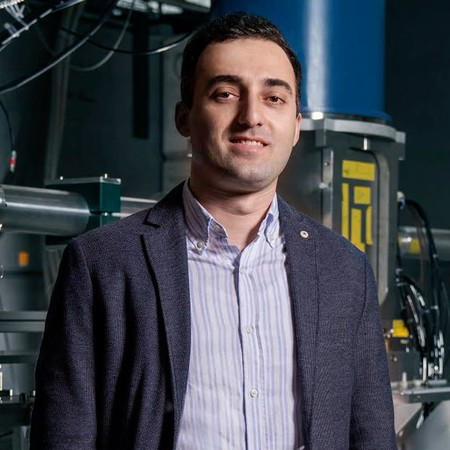"Time-Reversal Symmetry-Breaking in Charge-Ordered Kagome-Lattice Systems Probed with Muon Spin Rotation"
Kagome lattices stand at the forefront of research due to their fascinating interplay of topology, correlations, and magnetism [1-3]. Their special geometry enables various quantum phenomena, such as frustration and correlated orders, and features an electronic structure with flat bands, van Hove singularities, and Dirac cones. This makes them a prime subject for both experimental and theoretical research, offering insights into complex physical properties and potential technological applications.
In my lecture, I aim to shed light on the latest experimental developments concerning superconductivity and the magnetic aspects of charge order in various kagome-lattice systems, studied from the perspective of local magnetic probe. This involves the use of muon-spin rotation (µSR) as a function of depth from the sample surface and under extreme conditions like hydrostatic pressure, uniaxial strain, ultra-low temperatures, and high magnetic fields. µSR is complemented by magnetoresistance and X-ray diffraction techniques. Key systems under discussion will include: (1) The AV3Sb5 (A = K, Rb, Cs) compound series with V kagome lattice, notable for displaying a range of symmetry-breaking electronic orders, such as charge order and superconductivity. Here, we have identified a depth-tunable time-reversal symmetry-breaking state associated with charge order, as well as unconventional superconductivity [4-7]. (2) The bilayer kagome material ScV6Sn6, where hidden magnetism within the charge-ordered state was observed [8]. (3) The LaRu3Si2 system with Ru kagome layers, in which we identified two distinct types of charge order (bond order), with one manifesting above room temperature [9,10]. This finding marks the first instance of observing a charge-ordered state at or above room temperature in a correlated kagome lattice.
- I. Syozi, Prog. Theor. Phys. 6, 306 (1951).
- J.-X. Yin et. al., Nature Physics 15, 443 (2019).
- Z. Guguchia et. al., Nature Communications 11, 559 (2020).
- C. Mielke III, D. Das, et. al., and Z. Guguchia, Nature 602, 245 (2022).
- Z. Guguchia et. al., Nature Communications 14, 153 (2023).
- Z. Guguchia et. al., NPJ Quantum Materials 8, 41 (2023).
- J.N. Graham et. al., and Z. Guguchia, arXiv:240211130 (2024).
- Z. Guguchia et. al., Nature Communications 14, 7796 (2023).
- I. Plokhikh et. al., and Z. Guguchia, arXiv:2309.09255 (2023).
- Mielke III, V. Sazgari, et. al., and Z. Guguchia, arXiv:2402.16219 (2024).

Superconductivity and Magnetism Weyl Semimetals Magnetic Semiconductors